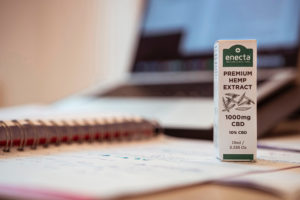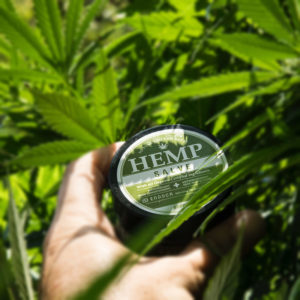By John Garvey
A leading medical marijuana researcher weighs in on cannabis cultivation, public health and cannabis classification
If you were stranded on a desert island and had to pick one plant to meet all your needs, this would be the best choice.
– Ethan Russo, M.D.
Last month we introduced physician and medical researcher Ethan Russo, who among other distinctions served as the Senior Medical Advisor to GW Pharmaceuticals for 11 years. Russo now heads the International Cannabis and Cannabinoids Institute (ICCI) in Prague.
Part I of this discussion focused on quality assurance, marijuana concentrates and public health. Today we’ll discuss plant classification, cultivation and cannabis pharmacology.
Like this discussion? Click here for more ICCI educational opportunities.
1) A pervasive misconception: THC + CBD is not a “spectrum.”
Of the hundreds of terpenoids and cannabinoids in cannabis sativa, THC and CBD are by far the best understood. Yet we know there are dozens of terpenes and other compounds that modify their effects and also work in isolation. Isolate CBD and THC from other plant compounds, and you have a lot of lost value.
 CBD in isolation is an anti-inflammatory, anticonvulsant and has some other applications. In some respects, THC and CBD are complimentary. Yet full-spectrum products rich in terpenes and other cannabinoids more likely to benefit patients.
CBD in isolation is an anti-inflammatory, anticonvulsant and has some other applications. In some respects, THC and CBD are complimentary. Yet full-spectrum products rich in terpenes and other cannabinoids more likely to benefit patients.
Of course most, if not all, recreational users prefer full-spectrum cannabis products.
2) Plant classification is an evolving, fascinating discussion.
Cannabis classification at its most basic goes something like this:
- Is it hemp or marijuana? (This has only to do with THC concentration, and given how many uses cannabis has, it’s really arbitrary.)
- Is it an indica, sativa or hybrid?
But as HEMP Magazine and have Cannabis Now recently discussed in detail, the way industry leaders classify different cultivars is evolving.
Recently, a number of competing nomenclature systems have come forward … to determine the proper taxonomy for cannabis,” reports Mitchell Colbert in Hemp Magazine. “Out of these, the one which has gained the most acceptance among scientists and hemp farmers is known as the ‘Phylos taxonomy,’ utilized by Oregon-based biotechnology company, Phylos Bioscience.
The Phylos taxonomy places cultivars into three simple classifications:
- Type I: THC dominant with relatively-low CBD
- Type II: CBD and THC balance
- Type III: CBD dominant, often with below 0.3% THC, legally classifying it as hemp
This is one of the categorizations Russo uses, though he also classifies plants based on morphological characteristics (narrow- vs. broad leaf, plant height), terpenoid content, fiber and seed production, and specific cannabinoid content.
Russo says an ideal cannabis classification scheme will take all these into account, plus scent, taste and specific effects on patients.
Talk to one of our reps to learn how our industry-leading point of sale and inventory management solutions can help keep your dispensary sprouting upward.
1-800-417-3030
3) Grow outdoors whenever it’s an option.
The main benefits of growing outdoors are energy savings and plants which are healthier for consumption. (When we say “outdoors,” we’re speaking broadly to include greenhouses and other partially-enclosed structures.)
We touched on this our April 9 blog.
Indoor grows are the most susceptible to fungi, bacterial and insect contamination. They’re also the most likely to have residual pesticides. Dr. Russo also pointed out that the prevalence of indoor growing and related health risks are largely a consequence of prohibition. The illegality of cannabis literally kept growing operations underground and many of the best-known techniques for producing high yields involve indoor growing.
But does growing outdoors mean sacrificing yields? Nope. More and more anecdotal accounts suggest that outdoor growing may yield superior cannabinoid and terpene production. Stick that in your pipe and smoke it.
Russo offered two key pest control suggestions:
- Mechanical pest control. Yellow sticky cards which attract and trap pests are a safe and effective example of this.
- Biological pest control. Another alternative to spraying is biological pest control, or the use of insects that prey on harmful mites and the like. Applied Bio-nomics (OR) is one company with cannabis-specific pest solutions.
4) CBD is on top, but don’t knock the medicinal value of THC!
 CBD might be king right now, particularly since the FDA approved Epidiolex in June of last year. But however valuable we now understand CBD and terpenes to be, THC shouldn’t be sidelined in the discussion of cannabis as medicine. THC is itself an anti-convulsant with neuroprotective and mood-enhancing properties. Some THC present in CBD-dominant products also renders them more effective, says Russo. This reduces the required dose for symptom relief.
CBD might be king right now, particularly since the FDA approved Epidiolex in June of last year. But however valuable we now understand CBD and terpenes to be, THC shouldn’t be sidelined in the discussion of cannabis as medicine. THC is itself an anti-convulsant with neuroprotective and mood-enhancing properties. Some THC present in CBD-dominant products also renders them more effective, says Russo. This reduces the required dose for symptom relief.
Not only is every medical condition unique; every human body is unique.
So tell your boss you’re not just doing it for fun. (Actually, it might be best to defer on that conversation.)
5) Patient care should allow for individualized treatments, but guidelines also apply.
In general, individualization of dosing is a good policy with cannabis-related medicine, says Russo, who has decades of experience as a practicing physician.
He adds that unfortunately, the tendency in pharmaceuticals is towards a one-size fits all approach.
Not only is every medical condition unique; every human body is unique. A therapy that’s successful for 19 out of 20 patients might not work for the odd one out. So some may achieve greater relief by vaping at a higher temperature that delivers greater amounts of THC, even at the cost of burning off some beneficial terpenes.
As a general guideline, patients who want individualized dosing and prompt relief of symptoms will benefit most from vaping terpene-rich, CBD-dominant (Type III) flower. Ideally, cannabis should be grown using organic farming standards in soil free of heavy metals.
Optimal THC presence is also, of course, highly individualized.
There are situations where THC dominance is useful, but it never hurts to have CBD, Russo says. CBD will not detract from the medical benefits of THC and brings medical benefits of its own.
Keep your dispensary sprouting upward



